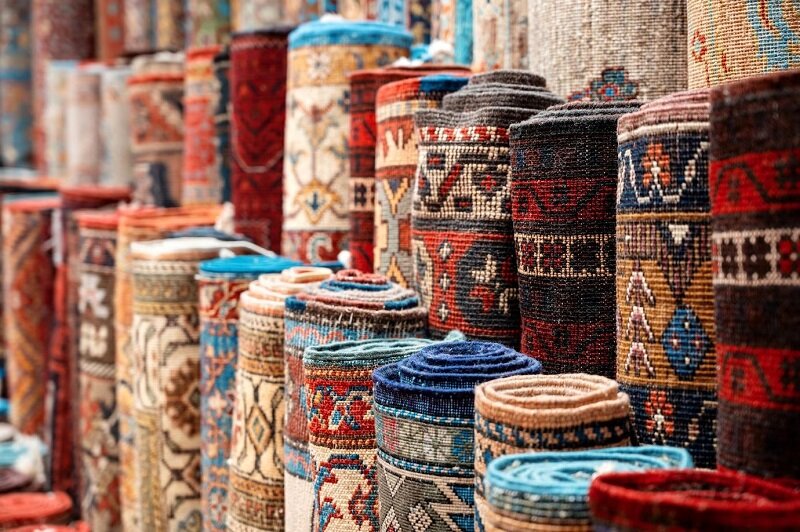Isfahan’s renowned bazaar of Persian carpets

TEHRAN - Nestled near the UNESCO-listed Naqsh-e Jahan Square, Isfahan’s carpet bazaar stands as a testament to centuries of tradition, craftsmanship, and cultural heritage.
The bazaar, itself a relic of the Safavid era, is more than just a market; it is a living museum, showcasing a comprehensive archive of Iranian carpets.
Many of the merchants in this bazaar are not just businessmen but custodians of a family legacy. For generations, these traders have passed down the secrets of carpet-making, from spinning and dyeing to drawing and weaving, preserving the ancient techniques that make Isfahan carpets so unique.
As you step into the bazaar, you are greeted by the architectural grandeur of the Safavid period. The brick-built structure features two-story shops lining both sides of the pathway, crowned with a dome roof adorned with intricate tiles and plasterwork. The design is both functional and aesthetic, with skylights in the arches providing natural ventilation and lighting.
These domes also regulate the market’s temperature throughout the seasons, making it a comfortable haven for both merchants and visitors.
Wandering through the bazaar, you will discover a vibrant world where the ancient art of carpet-making is still alive. Each shop is a treasure trove of beautifully crafted carpets, ranging from small rectangular pieces to large octagonal designs. The carpets of Isfahan are renowned for their aesthetic appeal, often considered the pinnacle of Iranian carpet design. They serve as a reference for artists and researchers, with their intricate patterns and motifs adorning many buildings across Iran.
The diversity of designs in Isfahan carpets is astounding. Traditional patterns such as Lechak and Toranj, Afshan, Eslami, Aksi, and hunting grounds captivate the eye with their complexity and beauty. Some of the most famous carpet design artists, including Haj Hossein Mosour Al-Maleki, Archang, and Rashtian, hail from this city, contributing to its rich artistic heritage.
Isfahan carpets are celebrated not only for their designs but also for their superior quality. These carpets boast a balanced texture, achieved through the meticulous use of warp, fluff, and silk in their knots. The dyeing process employs natural and direct colors, ensuring the carpets’ delicate and durable nature. This combination of artistry and durability makes Isfahan carpets highly sought after by collectors and connoisseurs worldwide.
Beyond the visual feast, the bazaar offers a sensory experience like no other. The air is filled with the rich scents of natural dyes and the rhythmic sounds of weavers at work. Each stall tells a story, from the raw wool and silk used in the carpets to the finished products displayed with pride. The shopkeepers, often keen to share the history and significance of their wares, provide a deeper understanding of the cultural and artistic importance of Isfahan carpets.
Whether you are an art lover, a history enthusiast, or simply a curious traveler, this bazaar offers a unique glimpse into the timeless beauty and craftsmanship of Iranian carpets.
A visit to Isfahan’s carpet bazaar is not complete without exploring the surrounding area of Naghsh-e Jahan Square. This UNESCO World Heritage site is a masterpiece of Persian architecture, featuring stunning monuments such as the Shah Mosque, the Ali Qapu Palace, and the Sheikh Lotfollah Mosque. The square itself is a bustling hub of activity, where locals and tourists alike gather to admire the beauty of Isfahan.
AM
Leave a Comment